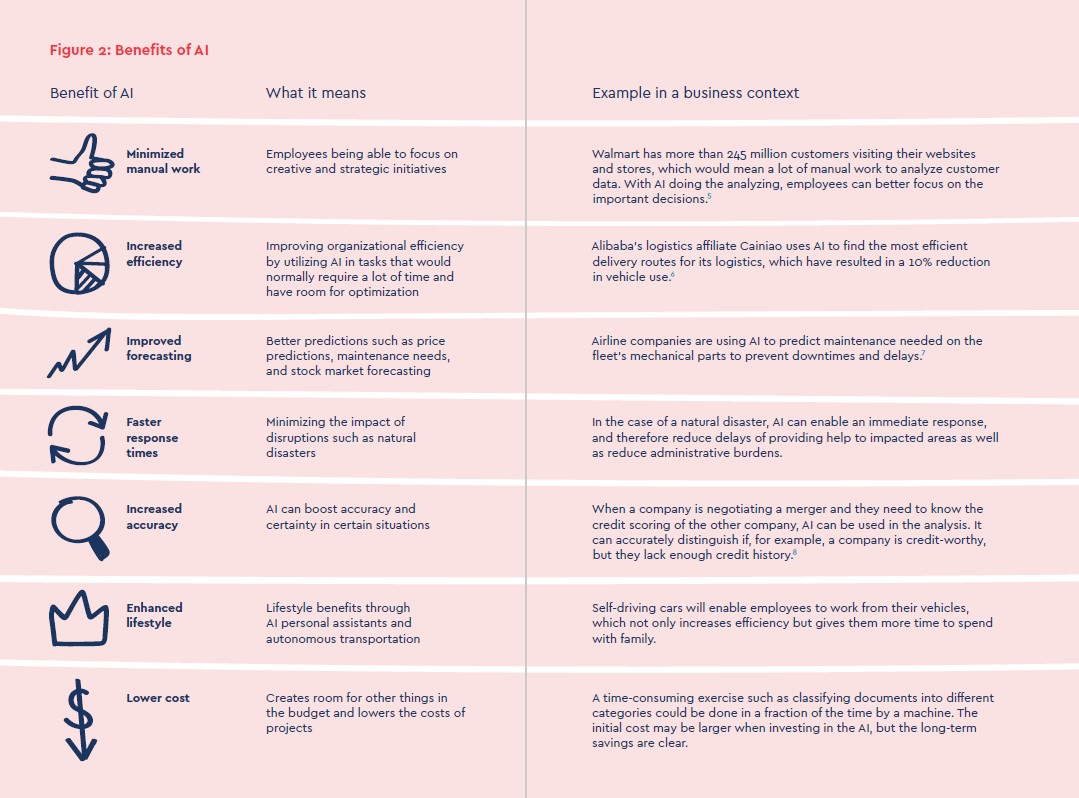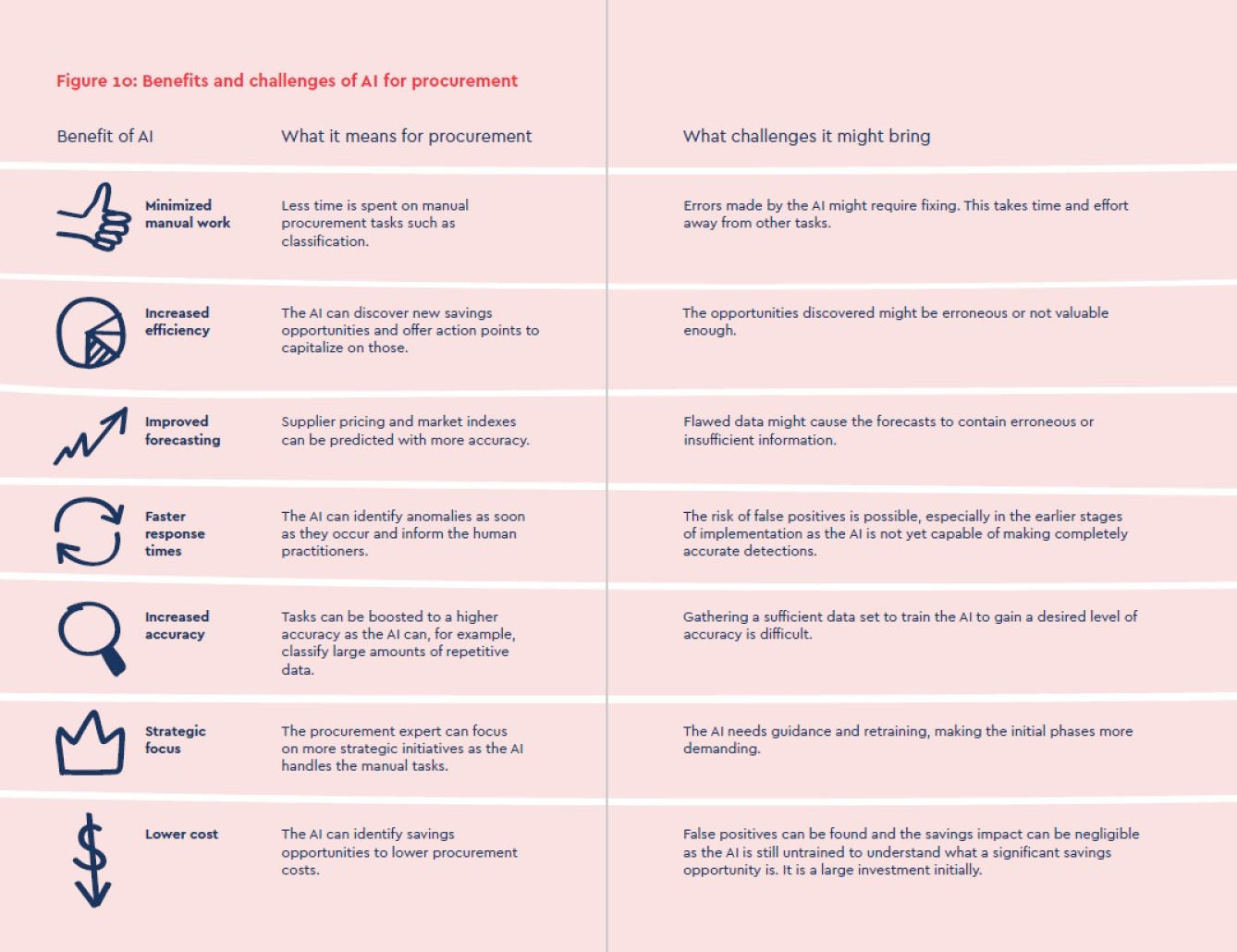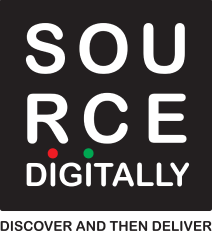AI in Procurement
While there are available vast information for learning the basics of AI, we recommend that those interested in the topic read ‘AI in Procurement’, a book created by procurement analytics company Sievo.

As the global leader in procurement analytics, Sievo combines best-of-breed spend management software, world-class services and value-added content. Sievo’s SaaS procurement analytics solutions include: Spend Analysis, Savings Lifecycle, Contract Analytics, Materials Forecasting, and CO2 Analytics.
Hereinafter are short extract from the book that we found useful for our purposes.
Initially, to get results from the AI, you need data for it to process as well as a business case where the AI can bring actual benefits.
Failing to keep pace with the development of new technology is a sure-fire way to let your procurement function fall into obsolescence.
The most recent big shift in procurement has been in the realm of digitalisation. Areas such as contract management, supplier management and e-sourcing received a boost in efficiency via digital transformations.
There is reason to believe that AI is the game-changer that has come to transform the procurement function once and for all.
Today, the most sophisticated procurement organizations have also started to utilize artificial intelligence to improve operational efficiency and aid decision making.
AI in business
AI is actually more of an enabler than an application itself.
AI is a new tool to help solve business problems and take care of the manual work to enable humans to focus on more strategic initiatives.
In 1765, it was unclear just how much mechanisation would revolutionise the way we do business in the future. Similarly, knowing just where AI will take us is difficult. It will certainly help businesses solve key problems but is unlikely to drastically shift the fundamental values and visions of the company.
Matthew Evans, Vice President of Digital Transformation at Airbus, puts it like this:
Matthew Evans
Vice President of Digital Transformation at Airbus
The reality of AI in procurement
Although an ever-growing number of AI-applications are available on the market, most procurement organisations are not yet actually using AI. In fact, according to a study by Deloitte, only 45% of CPOs are using or piloting AI in their procurement function.
The early trials and pilots proved that procurement AI can’t succeed alone. Further research revealed that utilising AI combined with human input lead to better results.
What’s possible now
There are 7 common areas where AI can be used across the procurement cycle.
01
Supplier risk management
AI can be used to monitor and identify potential risk positions across the supply chain.
02
Purchasing software
AI can be used to automatically review and approve purchase orders.
03
Accounts payable automation
Machine learning is increasingly used in accounts payable automation. ML assists in identifying errors and potential fraud in large amounts of automated payments.
04
Spend analysis
At Sievo, machine learning algorithms are widely used in spend analysis to improve and speed up a number of processes, including automatic spend classification and vendor matching. For example, if you have DHL, DHL Freight, Deutschland DHL, and DHL Express in your data, the machine learning algorithms are easily able to consolidate these together as DHL for increased visibility and data coherence.
05
Supplier information management
Big data techniques enable new ways to identify, manage and utilize supplier data across public and private databases.
06
Strategic sourcing
AI can also be used to manage, guide, and automate sourcing processes.
07
Contract management
AI has many potential use-cases in contract management
Where it’s going
Automating tasks is predicted to increase.
Let’s face it – many of the tasks currently performed by procurement professionals are still quite time-consuming, repetitive and simple in nature. These recurring and “tactical” tasks prevent procurement professionals from focusing on more strategic initiatives. Therefore, applying AI to these tasks is already one of the most common applications.
According to McKinsey, tasks like payment and invoice processing, placing and receiving orders, and managing demand for purchases are fairly easy to automate.
Capturing data outside the organisation
AI can be utilised to take advantage of new sources of data. So-called “external” data sources can include market indices, company credit ratings or publicly available information about suppliers.
Decision support
Automated notifications on anomalies, new opportunities and recommended activities directly in your procurement dashboards may sound like a dream but could be a reality very soon.
AI will be able to immediately notify the team if something abnormal has occurred and can give instant suggestions on what could be done.
The end result is that human procurement practitioners will be more aware of what is happening and will be able to take action sooner.
In addition, users can trust that the recommendations AI makes are based upon real facts rather than human hypothesis or guesswork. This gives the procurement leaders the confidence that their decisions are based upon real data, which removes uncertainty and leads to better decisions.
Many of the cases, such as new supplier identification, are possible with only human input as well. However, the increase in speed and accuracy brought about by AI justifies the cost and time spent implementing it into the procurement organisation.
Implications of AI for procurement
Firstly, is my company too small for AI?
No, it is not. Think of machine learning as a new form of software. Software today is used widely across all businesses, both big and small. If you are a Deutsche Telekom or Walmart, you are likely to have very different software needs than those of a small business operating locally. Generally, SMEs do not go about building their own machine learning applications, just as they’re unlikely to code their own custom software: instead, they search for the right software providers to suit their needs.
How will my processes change with AI?
Although the current generation of AI is excellent at dealing with narrow use-cases in procurement, the focus usually lies around creating speed and agility in existing manual processes. While this is valuable, CPOs who wish to get the maximum benefit from AI – such as analytical insights – need to completely reimagine their processes.
An effective way to begin is to consider how “manual”, “repetitive” or “boring” processes could change with AI. Another thing to note is that even though many of your procurement processes may have remained unchanged for decades, you can expect to review and change processes frequently as AI continues to evolve and develop.

What risks are associated with implementing AI?
Although minimising risk can be considered one of the benefits of implementing AI, there are also risks that it brings. One of the key risks in implementing AI lies in not understanding its complexity. If the individuals tasked with implementation do not have knowledge of the subject, you risk wasting time and resources or doing the project unprofessionally. Inadequate knowledge may also lead to a company trying to implement AI into a process where it simply won’t work. It may, therefore, be worth partnering with a third-party with knowledge of procurement AI and the experience required to ensure a smooth implementation that will set your company up for success.
How can organisations adapt to the new way of working?
Although the need for adaption varies between use cases, the most important thing to possess in every organisation is the will to adapt.
In other words, when adapting to AI and the new way of working, it is crucial to avoid pressing the panic-button the moment something doesn’t go as planned, as the process from start to finish is unlikely to be completely linear. It may also be worth considering implementing AI (and associated training) in a small team first before scaling upwards to the wider organisation.
Companies adapting to AI also need to transition to a data-driven decision-making culture in order to take full advantage of AI. What AI brings to the table is an ability to analyze your data efficiently and if you are not using this in your decision-making process, you are not taking full advantage of it.
AI’s impact on Procurement work
Will people lose their jobs to AI?
Rather than replacing procurement jobs, AI is expected to enhance current jobs and make working more efficient. Although AI will affect every sector and transform every job in some way in the future, few jobs will be completely replaced. Similar concerns about people losing their jobs were raised when the railroad, fax, and internet came along. However, as it turns out, jobs simply transformed, or those that were lost were replaced by completely new jobs. The best results will not be achieved by simply letting AI do everything, but through the constant collaboration between human and machine.
What kind of employees are needed?
Firstly, let’s reiterate that employees are still needed. Secondly, the employees who will be needed in an AI-collaborative workplace are the same employees that companies are hiring today. Sure, if you are struggling to use the internet or a basic laptop today, you may be in trouble in the future. But the attributes highly regarded today, such as diligence, a love of learning, an analytical mindset, and adaptability will remain so as AI is increasingly adopted.
More specifically, basic procurement skills such as supervising a repetitive process will no longer be needed in the same way as they are increasingly automated. Higher- level skillsets such as strategic thinking, agility and an ability to adjust to a rapidly changing environment will become crucial instead. Importantly, employees of the future should be able to use data as a valuable asset rather than a by-product of reporting.
Digital literacy is important, but companies should not expect every employee to transform themselves into data scientists. Nor should procurement professionals be expected to understand the algorithms behind procurement AI, just as people successfully use Google every day without needing to understand the complex algorithms behind it.

What should you consider when starting to use AI?
Data is key
After the initial decision to implement AI, the reality needs to be addressed: AI and machine learning cannot work without data to interpret. Luckily, every modern procurement organisation is sitting on a mountain of data, whether they know it or not.
Most of the time, only 20% of procurement data is utilized to improve operations. The remaining 80% is considered to be dark data. Dark data refers to unused data that may prove to be valuable. Some identified sources of dark data include:
- Unstructured transactional data
- Contract metadata
- General ledger information
- Data stored across disconnected ERPs or other databases
- External, unstructured data about products and suppliers available over the internet
Leading CPOs understand that the key to getting the most out of the technological investment is to focus on collecting the procurement data for AI to interpret.
Data sets can vary wildly between different companies, with smaller companies searching for highly-focused data sets while large companies enjoy a vast, globe-spanning amount of information flowing constantly through their systems. Much of the machine learning and AI capabilities are also based on data that can be captured outside the organisation.
There are two common business cases for procurement AI:
01
Applying AI over data sets to identify new sources of value, new opportunities, new suppliers, or new risks.
02
Using AI to make existing processes more efficient, getting rid of manual work and reducing operating costs.
Artificial intelligence = Algorithms exhibiting any behavior considered “intelligent”.
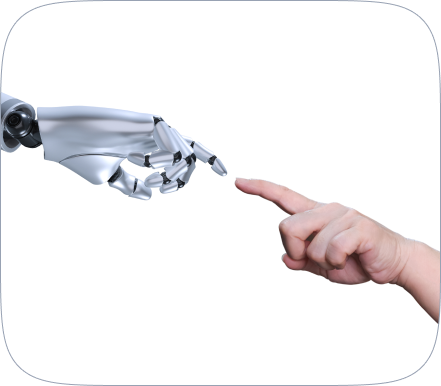
AI is a branch of computer science which also works as an umbrella term for technologies that enable machines to exhibit human-like behavior.
Although AI has been around for a while, incorporating it into the day-to-day life of a business takes time. A similar adjustment took place when the first computers were brought into offices in the 1970s. Early business computers were huge, slow and employees didn’t understand how to use the new “software” they now had access to. Eventually, the computer became a big part of everyone’s life. The transition may have taken decades but in the end, computers transformed from an introduced tool into a new way of working.
Artificial intelligence (AI) encompasses machine learning and natural language processing.
Machine learning (ML)
Machine learning = algorithms that detect patterns and automatically improve through experience.
In the case of machine learning, the machine is not given specific step-by-step instructions, but it learns from the data by itself. It is not necessary to say how the machine needs to perform a certain task. So long as it is provided with initial settings and data, it processes the data by itself and improves its performance over time.
Deep learning (DL)
Deep learning (DL) = a class of machine learning methods where advanced artificial neural networks progressively improve their ability to perform a task.
Natural language processing (NLP)
Natural language processing (NLP) = Algorithms which can interpret, transform and generate human language.
The objective of NLP is to read and understand human language in a valuable manner. Common use cases of NLP are language translation, such as Google Translate.
Current applications of NLP often use neural networks, which use data patterns to improve understanding. There are several benefits to using NLP, including the ability to make a quick summary and quick language translation.
